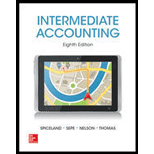
Lease
Lease is a contractual agreement whereby the right to use an asset for a particular period of time is provided by the owner of the asset to the user of the asset. The owner, who possesses the asset, is termed as ‘Lessor’ and user, to whom the right is transferred to, is termed as ‘Lessee’.
Capital lease:
This type of lease is a situation whereby the lessor (owner) transfers the ownership of leased asset to the lessee (user) on the maturity period of terms of lease. This is non cancellable in nature and it extends to long term and can also be capitalized.
Sale-Leaseback approach:
In the sale-leaseback approach, the owner of the leased asset sells it and immediately leases it back from the new owner. In this transaction, seller (lessee) receives cash from the sale of the asset and also pays periodic rent payments to the buyer (Lessor) to retain the use of asset.
Memo
From:
Person M
Controller
GT Company
To:
Person EF
CFO
GT Company
Subject: To write a memo to the company CFO regarding the accounting for sales transaction of capital lease like:
- 1. The Sale -lease back transaction
- 2. Gain or loss from sale of lease
- 3. Lease back
- 4. Capitalizing long term leases on the conceptual basis.
Want to see the full answer?
Check out a sample textbook solution
Chapter 15 Solutions
INTERMEDIATE ACCOUNTING
- Compute the materials price variance and materials usage variance.arrow_forwardI am trying to find the accurate solution to this financial accounting problem with the correct explanation.arrow_forwardI need help with this General accounting question using the proper accounting approach.arrow_forward
- This payroll is for wages earned Monday, may 4th through frit, may 8th.arrow_forwardYour plant produces 100 snowmobiles per month. Direct costs are $2,300 per snowmobile. The monthly overhead is $95,000. What is the average cost per snowmobile with overhead?arrow_forwardAt the beginning of the recent period there were 1,020 units of product in a department, one-third completed. These units were finished and an additional 5,500 units were started and completed during the period. 840 units were still in process at the end of the period. One-fourth completed. Using the weighted-average valuation method the equivalent units produced by the department were: A. 6,730 units B. 6,680 units C. 7,360 units D. 6,390 Units E. 8,250 unitsarrow_forward

 AccountingAccountingISBN:9781337272094Author:WARREN, Carl S., Reeve, James M., Duchac, Jonathan E.Publisher:Cengage Learning,
AccountingAccountingISBN:9781337272094Author:WARREN, Carl S., Reeve, James M., Duchac, Jonathan E.Publisher:Cengage Learning, Accounting Information SystemsAccountingISBN:9781337619202Author:Hall, James A.Publisher:Cengage Learning,
Accounting Information SystemsAccountingISBN:9781337619202Author:Hall, James A.Publisher:Cengage Learning, Horngren's Cost Accounting: A Managerial Emphasis...AccountingISBN:9780134475585Author:Srikant M. Datar, Madhav V. RajanPublisher:PEARSON
Horngren's Cost Accounting: A Managerial Emphasis...AccountingISBN:9780134475585Author:Srikant M. Datar, Madhav V. RajanPublisher:PEARSON Intermediate AccountingAccountingISBN:9781259722660Author:J. David Spiceland, Mark W. Nelson, Wayne M ThomasPublisher:McGraw-Hill Education
Intermediate AccountingAccountingISBN:9781259722660Author:J. David Spiceland, Mark W. Nelson, Wayne M ThomasPublisher:McGraw-Hill Education Financial and Managerial AccountingAccountingISBN:9781259726705Author:John J Wild, Ken W. Shaw, Barbara Chiappetta Fundamental Accounting PrinciplesPublisher:McGraw-Hill Education
Financial and Managerial AccountingAccountingISBN:9781259726705Author:John J Wild, Ken W. Shaw, Barbara Chiappetta Fundamental Accounting PrinciplesPublisher:McGraw-Hill Education





